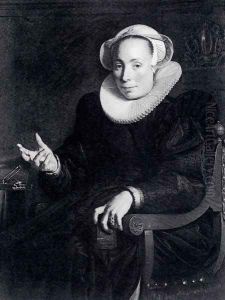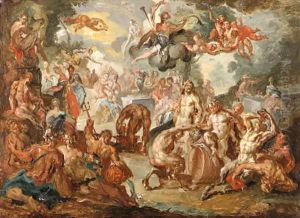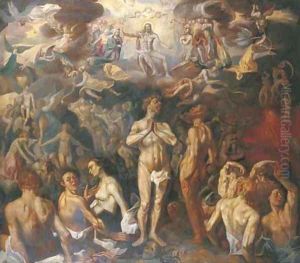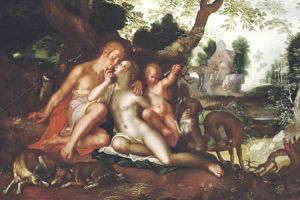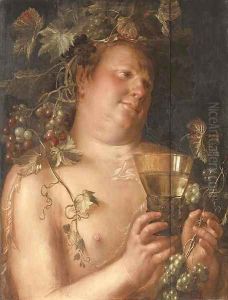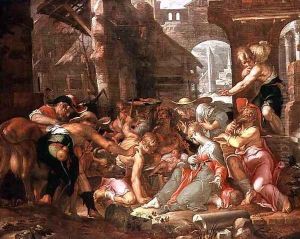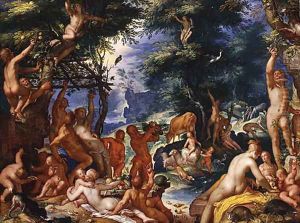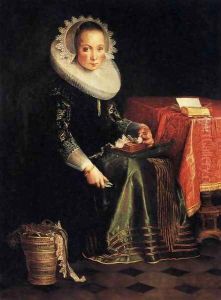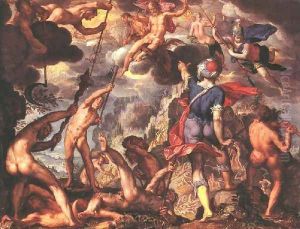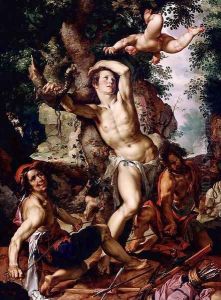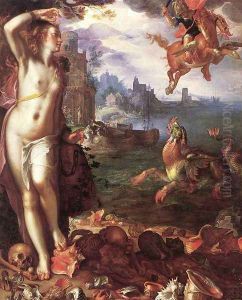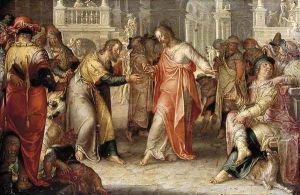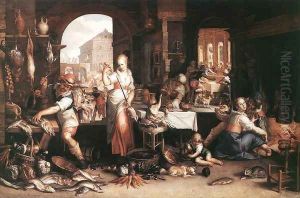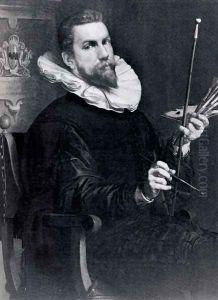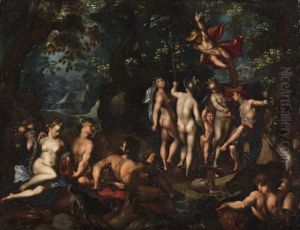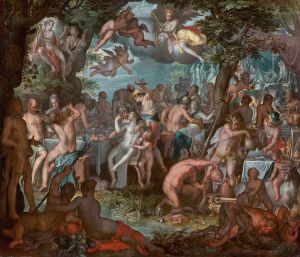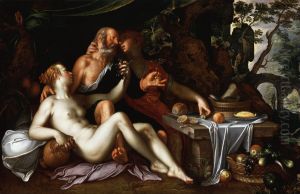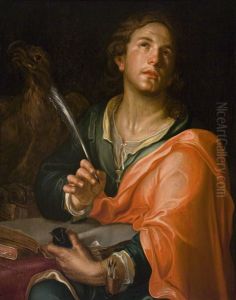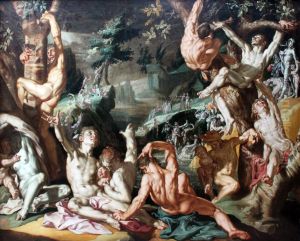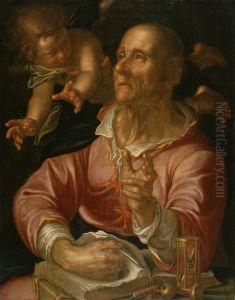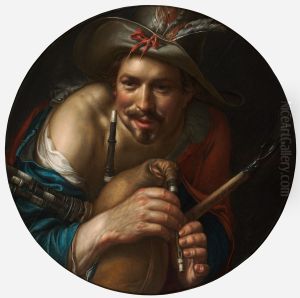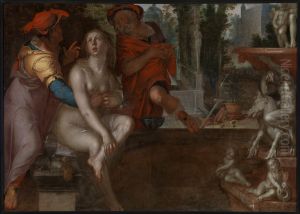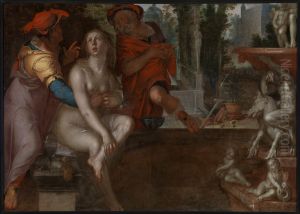Joachim Wtewael Paintings
Joachim Anthonisz Wtewael (also spelled Uytewael) was a Dutch Mannerist painter and draughtsman, as well as a highly successful flax merchant. Born in Utrecht in 1566, Wtewael's work is notable for its vibrant energy, intricate detail, and often, its exploration of mythological and biblical themes. Despite the rise of Caravaggisti and the Dutch Golden Age painters who embraced a more naturalistic style, Wtewael remained committed to the Mannerist tradition throughout his career, which spanned the late 16th and early 17th centuries.
Wtewael began his artistic training with his father, who was also a painter, before traveling to France and Italy to further his education. It was during his time in Italy that he became deeply influenced by the works of the Mannerist painters, a style he would adhere to upon his return to the Netherlands. In 1596, he joined the Utrecht Guild of Saint Luke and quickly established himself as one of the leading figures in the city's artistic community.
Apart from his religious and mythological scenes, Wtewael also painted portraits, landscapes, and still lifes, displaying a versatility across different genres. His works are distinguished by their meticulous execution, vivid color palette, and the often erotic undertones of his mythological scenes. Wtewael's ability to depict the human body in complex poses, combined with his skillful use of color and light, exemplifies the Mannerist fascination with beauty, elegance, and artifice.
Despite his adherence to Mannerism, Wtewael's work was well-received in his time, and he enjoyed the patronage of both local and international clients. His family, too, was involved in the arts; his son Peter Wtewael was also a painter, although not as widely recognized as his father.
Joachim Wtewael passed away in 1638 in his hometown of Utrecht, leaving behind a significant body of work that has since been recognized for its contribution to the Mannerist movement in Northern Europe. Today, his paintings can be found in major museums around the world, celebrated for their intricate detail, vibrant energy, and the unique blend of the divine and the earthly that characterizes much of his work.
